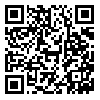Volume 12, Issue 4 (Oct & Nov 2018)
payavard 2018, 12(4): 296-308 |
Back to browse issues page
Download citation:
BibTeX | RIS | EndNote | Medlars | ProCite | Reference Manager | RefWorks
Send citation to:



BibTeX | RIS | EndNote | Medlars | ProCite | Reference Manager | RefWorks
Send citation to:
Ghiasi M, sarlak A, ghafari H. Human Capital and the Economic Growth in Iran s’ Provinces. payavard 2018; 12 (4) :296-308
URL: http://payavard.tums.ac.ir/article-1-6589-en.html
URL: http://payavard.tums.ac.ir/article-1-6589-en.html
1- Ph.D. Candidate in Economics, School of Management, Islamic Azad University, Arak Branch, Arak, Iran
2- Assistant Professor , Economics Department, School of Management, Islamic Azad University, Arak Branch, Arak, Iran ,a-sarlak@iau-arak.ac.ir
3- Associate Professor, Economics Department, School of Economics Payam-e-Noor Universityof Arak, Arak, Iran
2- Assistant Professor , Economics Department, School of Management, Islamic Azad University, Arak Branch, Arak, Iran ,
3- Associate Professor, Economics Department, School of Economics Payam-e-Noor Universityof Arak, Arak, Iran
Abstract: (5010 Views)
Background and Aim: In the past studies, few researchers have addressed the simultaneous effects of human capital in health and education indicators on the economic growth of the country, and especially, provinces of the country. Therefore, the current study examined the simultaneous effects of human capital in health and education indicators on the economic growth in Iran s’ Provinces
Materials and Methods: This was an applied, analytical, descriptive study, and the research community consisted of the country's provinces. The data were collected through documentary-library research and from the databases of Iran Office for National Statistics, and Central Bank; afterwards, they were analyzed via unit-root and chow tests, using Generalized Method of Moments (GMM) and Eviews 9.
Results: The results showed that each percent of rise in family health expenditure, fertility rate, and life expectancy increased the provincial economic growth by 0.033%, 0.71%, and 1.83% respectively. In addition, 1% rise in mortality rate decreased the provincial economic growth by 0.43%. Educational expenditure influenced the provincial economic growth by a coefficient of 0.08, and credit capital asset acquisition, by a coefficient of 0.048.
Conclusion: Human capital is considered a long-term investment in health and education sectors which should be an important priority on the agenda of provincial policymakers.
Materials and Methods: This was an applied, analytical, descriptive study, and the research community consisted of the country's provinces. The data were collected through documentary-library research and from the databases of Iran Office for National Statistics, and Central Bank; afterwards, they were analyzed via unit-root and chow tests, using Generalized Method of Moments (GMM) and Eviews 9.
Results: The results showed that each percent of rise in family health expenditure, fertility rate, and life expectancy increased the provincial economic growth by 0.033%, 0.71%, and 1.83% respectively. In addition, 1% rise in mortality rate decreased the provincial economic growth by 0.43%. Educational expenditure influenced the provincial economic growth by a coefficient of 0.08, and credit capital asset acquisition, by a coefficient of 0.048.
Conclusion: Human capital is considered a long-term investment in health and education sectors which should be an important priority on the agenda of provincial policymakers.
Keywords: Health Human Capital, Educational Expenditures, Economic Growth, Fertility Rates, Life Expectancy
Send email to the article author
| Rights and permissions | |
 |
This work is licensed under a Creative Commons Attribution-NonCommercial 4.0 International License. |





